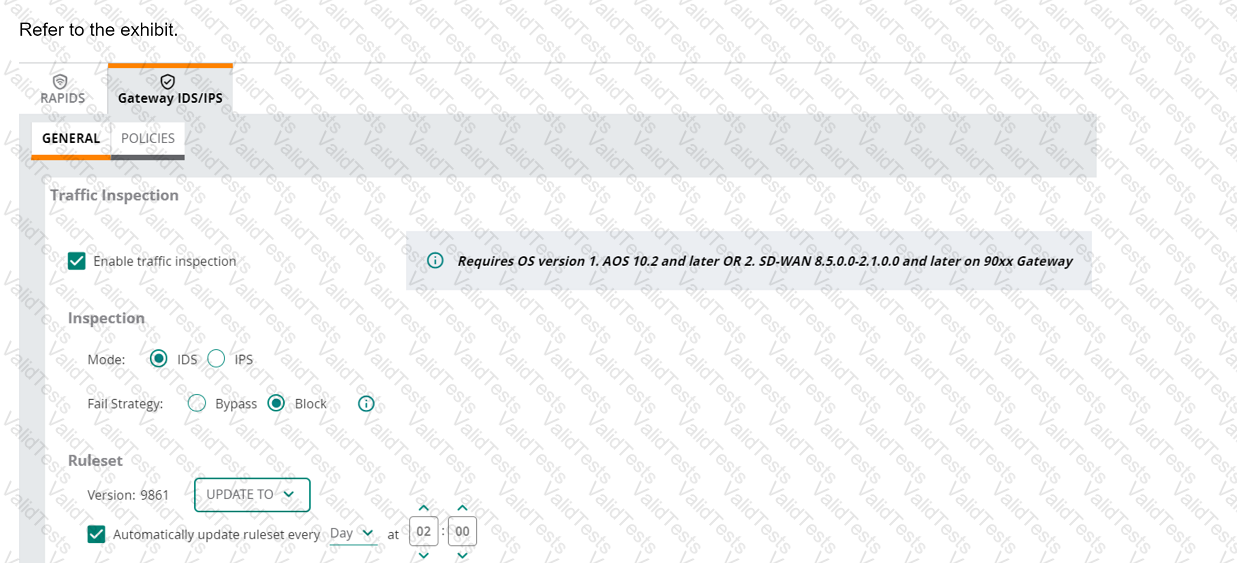A company uses HPE Aruba Networking ClearPass Device Insight (CPDI) (the standalone application option). In the details for a generic device cluster, you see a
recommendation for "Windows 8/10" with 70% accuracy.
What does this mean?
A company has HPE Aruba Networking APs managed by HPE Aruba Networking Central. You have set up a WLAN to enforce WPA3 with 802.1X authentication.
What happens if the client fails authentication?
You have configured an AOS-CX switch to implement 802.1X on edge ports. Assume ports operate in the default auth-mode. VolP phones are assigned to the
"voice" role and need to send traffic that is tagged for VLAN 12.
Where should you configure VLAN 12?
A company has AOS-CX switches. The company wants to make it simpler and faster for admins to detect denial of service (DoS) attacks, such as ping or ARP floods, launched against the switches.
What can you do to support this use case?
You manage AOS-10 APs with HPE Aruba Networking Central. A role is configured on these APs with the following rules:
Allow UDP on port 67 to any destination
Allow any to network 10.1.6.0/23
Deny any to network 10.1.0.0/16 + log
Deny any to network 10.0.0.0/8
Allow any to any destination
You add this new rule immediately before rule 2:
Deny SSH to network 10.1.4.0/23 + denylist
What happens when a client assigned to this role sends SSH traffic to 10.1.11.42?
You want to examine the applications that a device is using and look for any changes in application usage over several different ranges. In which HPE Aruba Networking solution can you view this information in an easy-to-view format?
A company has AOS-CX switches and HPE Aruba Networking ClearPass Policy Manager (CPPM). The company wants switches to implement 802.1X authentication to CPPM and download user roles. What is one task that you must complete on CPPM to support this use case?
A company has HPE Aruba Networking APs running AOS-10 that connect to AOS-CX switches. The APs will:
Authenticate as 802.1X supplicants to HPE Aruba Networking ClearPass Policy Manager (CPPM)
Be assigned to the "APs" role on the switches
Have their traffic forwarded locally
What information do you need to help you determine the VLAN settings for the "APs" role?
What is a use case for running periodic subnet scans on devices from HPE Aruba Networking ClearPass Policy Manager (CPPM)?

(Note that the HPE Aruba Networking Central interface shown here might look slightly different from what you see in your HPE Aruba Networking Central
interface as versions change; however, similar concepts continue to apply.)
An HPE Aruba Networking 9x00 gateway is part of an HPE Aruba Networking Central group that has the settings shown in the exhibit. What would cause the
gateway to drop traffic as part of its IDPS settings?